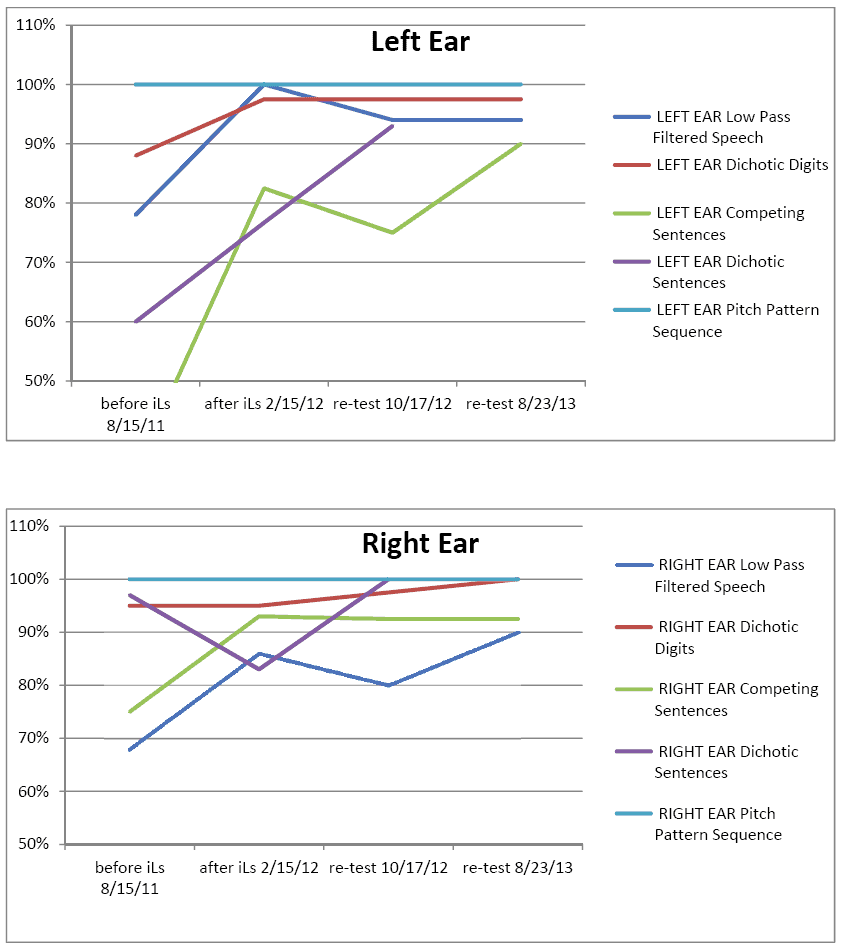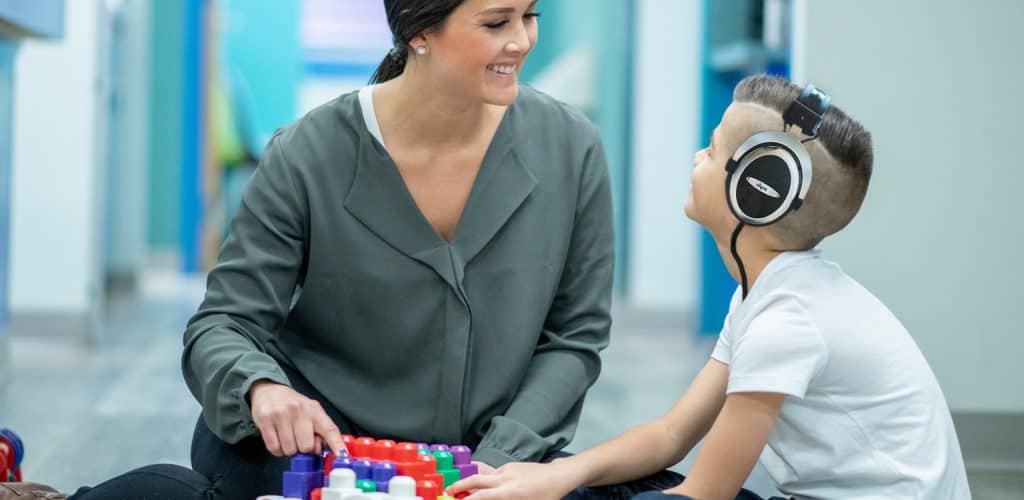Name of Organizations:
Children’s Therapy of Woodinville & Overlake Family Vision
Co-authors:
Amelia’s Mother, Doreen Hunt, OTR/L, Mary Baker, O.D.
Client:
“Amelia”, female, age 10
Background:
“Amelia” struggled in school and had tutors starting in first grade. She tried hard but struggled with multi-step directions, executive functioning, math, and reading comprehension. She consistently tested about one year behind in reading assessments. Additional concerns included poor organization, difficulty starting or completing tasks, and poor “predictive thinking and planning.” Amelia reported fears of loud noises such as school fire alarms and fireworks. Amelia reported that words move around on the page when she reads, and one line slants uphill and she sees another line below it. She also skips words or gets lost when reading and has to re-read sentences more than once to grasp the meaning of what is read. Her mother noted that she has been observed turning her head to one side or covering one eye while watching TV or doing other activities. In fourth grade, the workload was overwhelming, and Amelia started having anxiety about going to school and doing her homework. At the suggestion of the school, her mother sought out further testing.
Presenting Problems:
- Auditory integration deficit and a classic right-ear advantage (left-ear weakness). (An auditory integration deficit occurs due to inefficient inter-hemispheric communication.)
- Auditory processing difficulties
- Sensory sensitivities
- Diplopia (double vision), convergence insufficiency, and binocular/oculomotor dysfunction (focus/tracking)
- Anxiety surrounding school and homework
Therapeutic Goals:
Improve auditory processing speed and dichotic listening; improve problem-solving and planning skills, as well as organization skills. Improve self-regulation and decrease anxiety. Correct vision difficulties to improve reading speed and to enjoy reading.
ILS Program Used:
ILS Reading & Auditory Processing Program on the Total Focus System at home, three times per week.
Other Interventions Used:
Occupational therapy (simultaneously while listening to the ILS program), vision therapy (simultaneously while listening to the ILS program), math tutoring, swim team
Summary of Changes:
Doreen Hunt, OTR/L:
Following completion of the Reading & Auditory Processing program, Amelia graduated (earlier than expected) from her vision therapy program. She now had little to no anxiety and showed more confidence in her daily activities. On her basketball team, she improved to the “top player,” and improved her swimming skills in the swim club. Amelia’s math skills had improved and completing written work was easier to engage in and complete. She had improved in following directions, and sequencing and planning skills. It was recommended that Amelia complete the Optimal Performance I and II programs the following summer when there would be more time to complete these programs.
Mary Baker, O.D.:
Amelia’s tracking became smooth. She was able to read much faster and even began to like to read. Her diplopia was corrected, the eye strain was much reduced, and she showed much improved binocular function. Amelia reported that she has recently been reading a novel a week.
Cheryl Lokanis, Au.D.:
When we did initial testing for auditory processing, we were able to identify an auditory integration deficit. This testing served as a baseline to compare future tests. Subsequent testing after ILS indicated normal findings and a significant improvement from the baseline tests.
*L/R ear data provided by Dr. Cheryl Lokanis, Au.D., Evergreen Speech & Hearing Clinic
|
Auditory Processing Test Scores on the SCAN 3:C |
||
| Pre-ILS Treatment | Post-ILS Treatment | |
| Filtered Words | 16% SS: 7 | 84% SS: 13 |
| Competing Words – Directed Ear |
9% SS: 6 | 50% SS: 10 |
| Time Compressed Sentences | 16% SS: 7 | 50% SS: 10 |
Amelia’s Mother:
“I was told that there were no cures for auditory processing and that the best option is to teach her some skills that will help her in the classroom setting. I decided that wasn’t the best option for her, began my own research, and eventually found ILS on the internet. When the ILS module was complete, I had her re-evaluated by the audiologist at Evergreen Speech and Therapy — she scored in the normal range and we, of course, were ecstatic!!” reports her mother. “My daughter’s life and our family have been profoundly changed. A child once full of self-doubt, anxiety, and who struggled at school has transitioned into a child who is confident, assertive, and excelling in all of her classes (3.94 GPA last year as a sixth-grader in middle school). Her auditory processing scores are at or above the normal range and have maintained or improved since her ILS therapy. At the end of last year, she was reading above grade level at 7.2 (seventh grade, second month).”
Comments by Ron Minson, MD, ILS Clinical Director:
This case underscores the profound emotional impact on a child whose academic performance is hampered by an auditory processing and visual motor disorder. These are two of the most important skills required for academic success, particularly for reading. When information is poorly processed through hearing and vision, even in the face of normal or high intelligence, the emotional consequences can be very traumatic. Thus, her increasing anxiety, refusal to do homework, resisting going to school, etc., are quite understandable. As self-protection, it is normal to protest exposure to these painful and embarrassing events. At its origin, this is not a psychological issue but rather a neurological/physiological issue with painful emotional responses.
Of clinical interest are the findings from the audiologist’s assessment of auditory processing: her ability to hear and recognize the differences in auditory tones is excellent (Pitch Pattern Sequence), yet there is a deficit in integrating auditory information coming into each ear at the same time, more specifically, a problem with inter-hemispheric integration (Competing Sentences in the R and L ears-being very weak in the L ear-and dichotic sentences L ear). Poor executive function is common with an APD as the auditory system has strong connections to the frontal and prefrontal lobes — the seat of executive function.
Two final points: combining the home vision exercises with the ILS bone conduction (BC) headphones is excellent; the BC will enhance the effect of visual-motor exercises through its effect on the vestibular system, the primary anatomical structure for coordinated eye movements. Lastly, why didn’t the years of tutoring solve the learning deficits? A likely explanation is that an APD is typically a subcortical problem, whereas tutoring is primarily addressing cortical function, which in this case is deficient due to poor subcortical input. Once the subcortical problems have been corrected, then the tutoring is important to fill in the gaps in learning and catch up to grade level.





 © 2025 Unyte Health US Inc.
© 2025 Unyte Health US Inc.